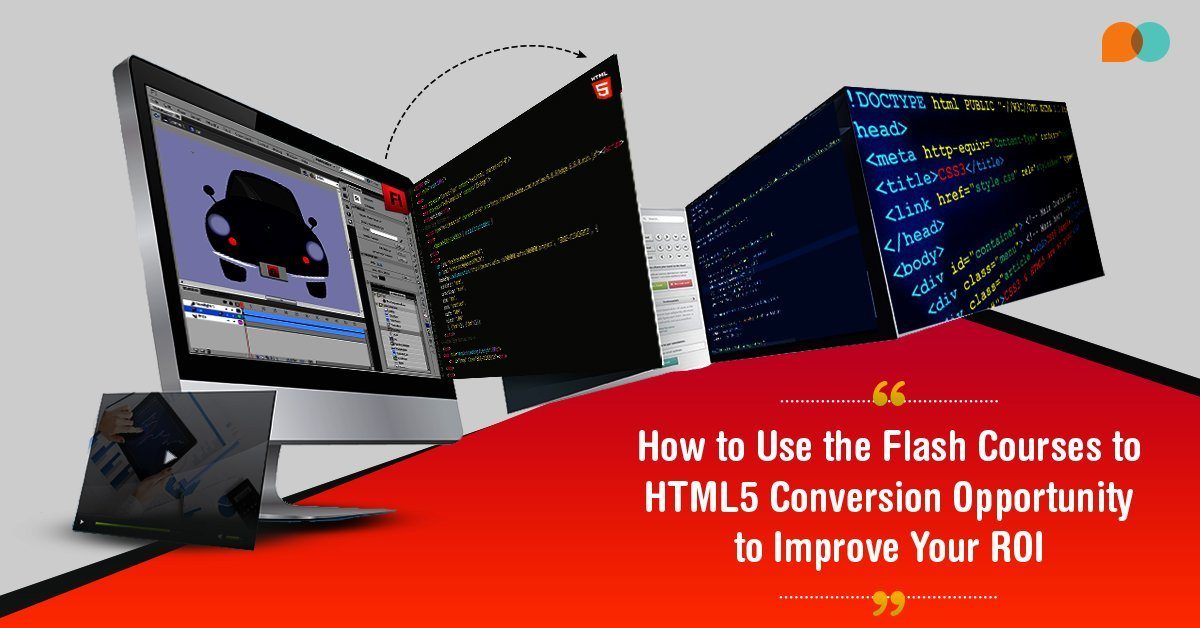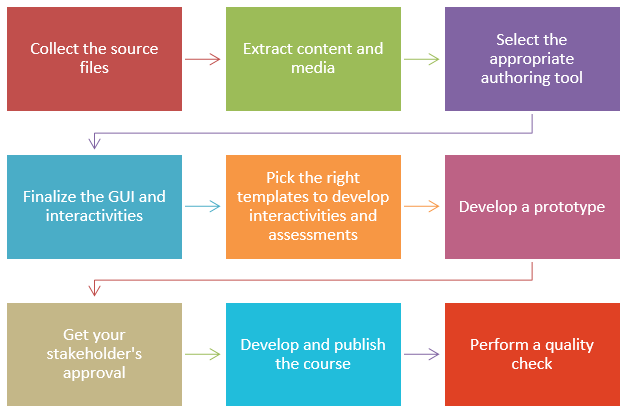Search for...
#HTML5 Bookmarks
Published Bookmarks
 8 Strategies To Capitalise On Flash To HTML5 Migration Opportunity And Get A Higher Return On Investment (ROI)
8 Strategies To Capitalise On Flash To HTML5 Migration Opportunity And Get A Higher Return On Investment (ROI)
This article provides 8 Strategies that organizations can use to capitalise the flash to HTML5 migration opportunity and get a higher Return on Investment (ROI)
 How To Use The Flash Courses To HTML5 Conversion Opportunity To Improve Your ROI
How To Use The Flash Courses To HTML5 Conversion Opportunity To Improve Your ROI
Organizations have tremendous investment in Flash-based legacy courses. With the phasing out of Flash, the legacy Flash courses needs Flash to html5 conversion so that they can support multi-device delivery (the same course can run across devices from desktops/laptops to tablets/smartphones).
 Flash To HTML5 Conversions: Save Your Budget Despite The Absence Of Source Files
Flash To HTML5 Conversions: Save Your Budget Despite The Absence Of Source Files
Wondering if Flash to HTML5 conversions are possible for existing online training programs that lack source files? Even if it’s possible, does it have a huge impact on the eLearning budget? This blog gives you the answers.
 Flash to HTML5 Conversions: A Checklist To Ensure A Smooth Conversion
Flash to HTML5 Conversions: A Checklist To Ensure A Smooth Conversion
This presentation gives a checklist for Flash to HTML5 conversions. This will enable organizations to be proactive and start the process of converting their Flash-based eLearning courses to HTML5.
 Flash to HTML5 Conversion Process: A Ready Reckoner
Flash to HTML5 Conversion Process: A Ready Reckoner
Looking for a ready reckoner on the Flash to HTML5 conversion process? This blog gives you the information you need.
 4 Ways To Maximize The Impact Of Your Training When Migrating From Flash To HTML5
4 Ways To Maximize The Impact Of Your Training When Migrating From Flash To HTML5
These 4 Examples on How to Use Migration from Flash to HTML5 To Enhance the Impact of Your eLearning helps organizations improve their eLearning.
 Why Authoring Tools Score Over HTML5 Code For Flash Course Conversions
Why Authoring Tools Score Over HTML5 Code For Flash Course Conversions
If you have been wondering why authoring tools are popular compared to HTML5 code to convert Flash-based eLearning courses to HTML5, this blog gives you some insights.
Flash to HTML5 E-learning Conversion: The 4 ‘R’s That Matter
Confused where to start with your Flash to HTML5 e-learning conversion process? Download this eBook to know the four conversion methods, and insights on how to plan for it. Also, get a sneak peek at how forward-thinking companies are doing it.
 Waving Goodbye to Flash!
Waving Goodbye to Flash!
HTML5 is suitable for mobile devices and has other serious advantages, and we’ve rounded up the important details on why we’re completely switching to this format.
 Webinar: How to Hack Storyline’s HTML5 Output | eLearning Brothers
Webinar: How to Hack Storyline’s HTML5 Output | eLearning Brothers
Last week we had our very own James Kingsley join us in a webinar about Storyline and HTML5. You can watch a recording if you missed it.
Submit Bookmark




